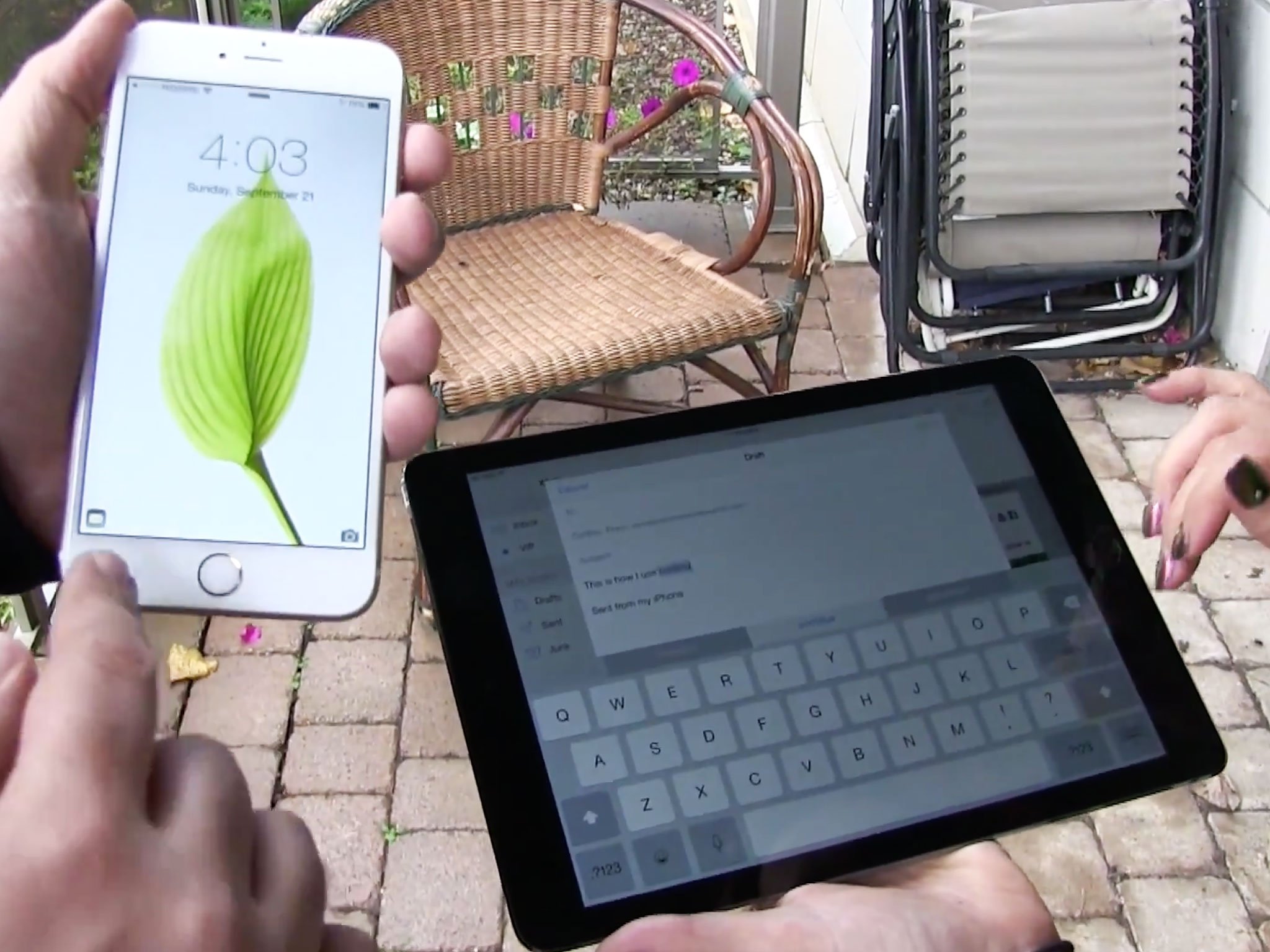Handoff versus iCloud sync, explained

Handoff is the cornerstone of Apple's Continuity feature — a way to make your iPhone, iPad, and Mac integrate and work better together. It lets you start an activity on one device and pick up right where you left off on another device. But... sync has done that for years, hasn't it? What makes Handoff better and more convenient? Let's break it down.
Sync works by pushing data — like email or messages — from the cloud down to all your devices, or by pushing changes — like bookmarks and documents — from one of your devices up to the cloud, then to all your other devices. As such, if you get an email on your iPhone, you can respond to that email from your Mac. If you create a presentation on your Mac, you can edit it on your iPad.
But sync isn't perfect. If you put down one device and pick up another, your data will be synced, but not the activity: Work on a presentation and switch to your iPad, and your last save will sync to your other devices, but it won't open up to the specific slide you were editing on your Mac. In short: What you were working on will be there, but that you were working on it won't be right there.
That's where Handoff comes in. Handoff keeps track of not only what you're doing, but what you're doing at that very moment. When you switch devices, it lets you bring that activity along with you.
With iCloud sync, when an email or message comes in on your iPhone and you start to reply but then realize you'd much rather write on your iPad or Mac, you have to save the draft, switch devices, find the Mail app, launch it, look for the draft, and open it — and only then can you start working again.
With Handoff you hit the Mail icon on whatever device you'd like to resume your draft on, and keep right on typing.
With sync, if you save a Keynote presentation on your Mac and then pick it up on your iPad, you have to find the Keynote app, launch it, open iCloud Drive, open your presentations, swipe down to the slide you want to edit, and only then can you start editing.
Master your iPhone in minutes
iMore offers spot-on advice and guidance from our team of experts, with decades of Apple device experience to lean on. Learn more with iMore!
With Handoff, you hit the Keynote icon and keep right on editing.
The same things hold true for App Store apps: With sync, if you save an article to read later in Pocket on iPad then get up to leave with your iPhone, you have to find the Pocket app, launch it, and find the article to keep reading. With Handoff, you just hit the Pocket icon and you're good to go.
In short: Handoff lets you avoid hunting around for the app you were using or the content you were using in it. It doesn't just push the data down, it lets you pull the activity across.
Sync has no real concept of when or where. Handoff, for security and privacy reasons, very much does. Sync is great if you just want to make sure all your stuff is backed up and available anytime, anywhere. But Handoff is better when you want to continue what you're doing right now, right where you are.
Once you get used to incorporating Handoff into your day-to-day routine, it's easy to use it to your advantage. You can switch devices to switch context. You can go from mouse and keyboard to direct multitouch manipulation and back whenever the circumstances dictate or mood strikes you. It can become as much about switching your toolsets as continuing your activities, and that can be tremendously helpful for both productivity and creativity.
And it's all just an icon swipe or click away, thanks to Continuity and Handoff.

Rene Ritchie is one of the most respected Apple analysts in the business, reaching a combined audience of over 40 million readers a month. His YouTube channel, Vector, has over 90 thousand subscribers and 14 million views and his podcasts, including Debug, have been downloaded over 20 million times. He also regularly co-hosts MacBreak Weekly for the TWiT network and co-hosted CES Live! and Talk Mobile. Based in Montreal, Rene is a former director of product marketing, web developer, and graphic designer. He's authored several books and appeared on numerous television and radio segments to discuss Apple and the technology industry. When not working, he likes to cook, grapple, and spend time with his friends and family.
